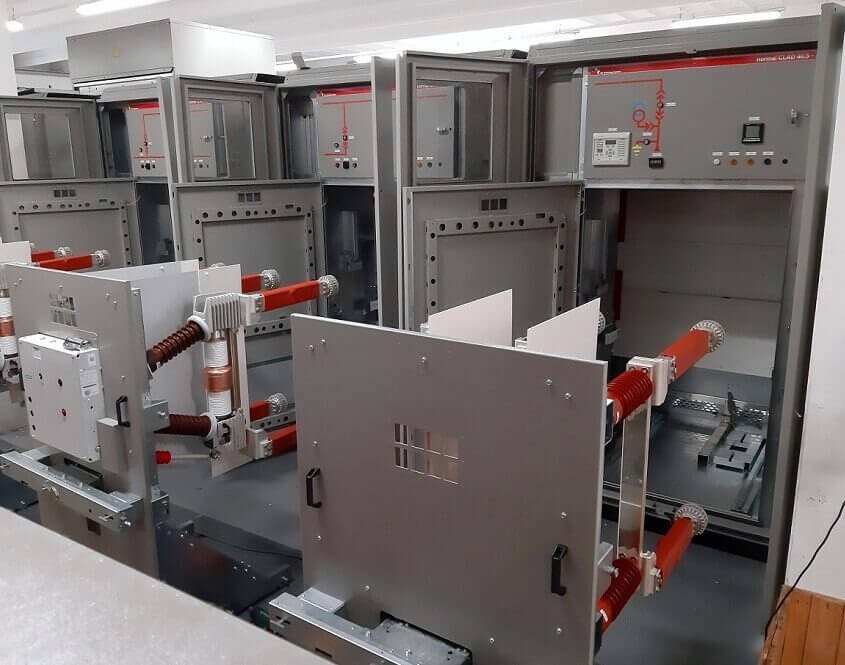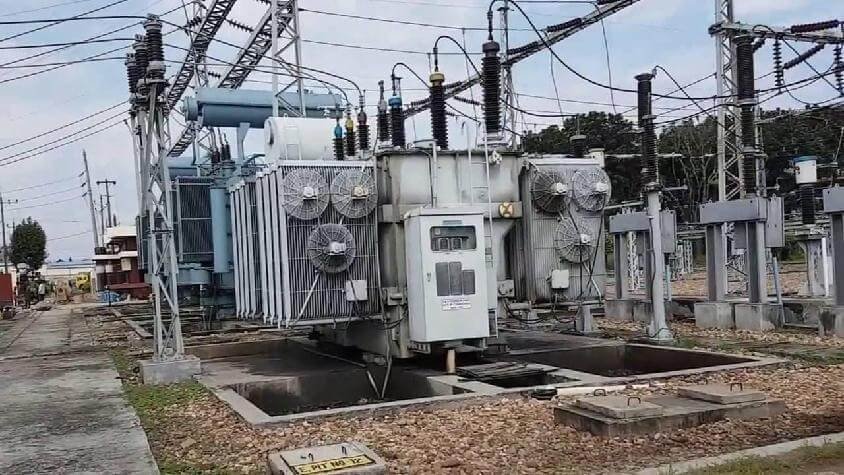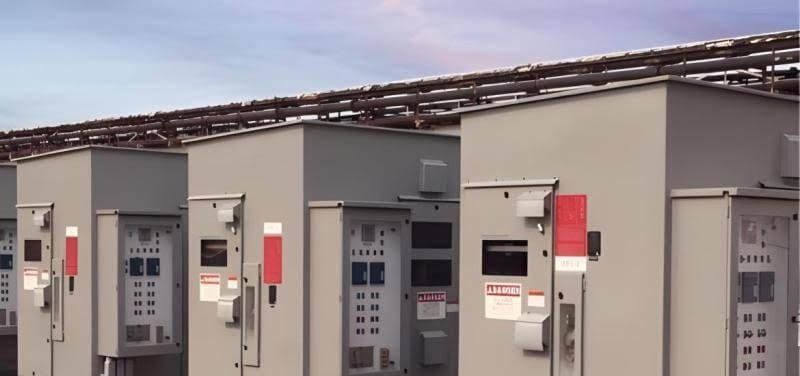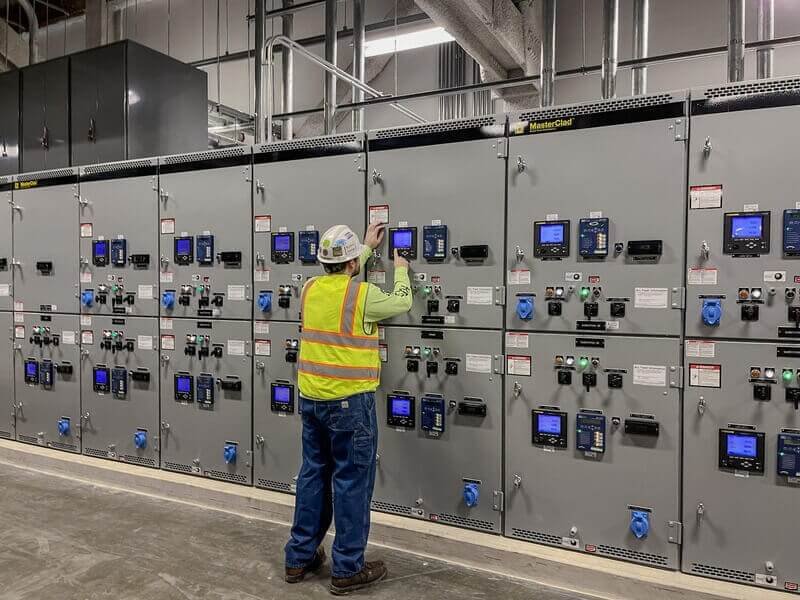The foundation of any reliable electrical power system is control, protection and isolation of electrical equipment safely and efficiently. Electric switchgear is the critical interface between power generation, transmission and distribution networks, ensuring smooth operation and protecting personnel and equipment from electrical faults. In today’s fast paced industrial world, understanding switchgear technology is key for electrical engineers, facility managers and infrastructure planners.
Modern power distribution systems require sophisticated control mechanisms to handle varying load conditions, protect against electrical faults and provide operational flexibility. The evolution of switchgear technology has changed the way we design power systems, from simple mechanical switches to intelligent digitally controlled systems that offer unparalleled levels of monitoring and control.
Understanding Electric Switchgear Fundamentals
Electric switchgear encompasses a broad range of electrical devices used to control, protect, and isolate electrical equipment in power systems. These systems combine switches, fuses, circuit breakers, relays, and other protective devices within a common enclosure, creating a comprehensive solution for power distribution management.
The primary functions of switchgear extend beyond simple on-off control. These systems provide fault detection and isolation, load switching capabilities, protection coordination, and system monitoring functions. Modern switchgear installations incorporate advanced communication protocols, enabling integration with supervisory control and data acquisition (SCADA) systems for remote monitoring and control.
Switchgear design considerations include fault current ratings, continuous current capacity, voltage levels, environmental conditions, and operational requirements. The selection process involves careful analysis of system parameters, load characteristics, and protection coordination studies to ensure optimal performance and reliability.
Types of Electrical Switchgear Classifications
Electrical switchgear is usually classified by voltage, construction technique, interrupting medium and the application need. Knowledge of these types can enable engineers to make the right choices of solutions to particular applications and operating conditions.
The most widespread type of classification of switchgear systems is based on voltages. Low voltage switchgear is used at voltages of up to 1000V AC or 1500V DC and is typically used in the distribution of buildings, industrial control panels and motor control. Molded case circuit breakers, contactors and protection relays are frequently combined into these systems in small enclosures.
Metal enclosed switchgear operating between 1kV and 35kV is known as medium voltage metal enclosed switchgear and is used as the workhorse in industrial facilities, commercial buildings and distribution substations. These systems are built strongly in metal-clad or metal-enclosed designs, which are more protective and safe in use.
High voltage switchgear works with voltages exceeding 35kV, which would be found in transmission substations and power plants, and large distribution facilities. Such systems tend to use gas insulated or air insulated technology depending on the environmental limitations and operating needs.
Classification according to construction is air-insulated switchgear (AIS), gas-insulated switchgear (GIS), and hybrid. The technologies all have their own benefits in regard to footprint, reliability and maintenance, and therefore lend themselves to different applications and operating environments.
Low Voltage Switchgear Applications and Design

Low voltage switchgear systems form the foundation of electrical distribution in commercial and industrial facilities. These systems typically incorporate intelligent protection devices, communication capabilities, and modular construction for enhanced flexibility and maintainability.
Modern low voltage installations utilize microprocessor-based protection relays, providing advanced protection functions including overcurrent, earth fault, arc fault, and power quality monitoring. These intelligent devices offer programmable settings, event recording, and communication capabilities that enhance system reliability and operational efficiency.
Motor control centers represent a specialized application of low voltage switchgear, combining motor starters, variable frequency drives, and protection devices within standardized enclosures. These systems provide centralized control for multiple motors while maintaining individual protection and control capabilities for each motor circuit.
Power factor correction and harmonic filtering often integrate with low voltage switchgear installations, addressing power quality concerns that can impact equipment performance and energy efficiency. These solutions typically incorporate automatic capacitor switching, harmonic filters, and monitoring systems to maintain optimal power quality conditions.
Medium Voltage Systems and Metal Enclosed Solutions
Medium voltage metal enclosed switchgear represents the critical link between transmission and distribution systems, providing robust switching and protection capabilities for industrial and utility applications. These systems combine primary switching devices with comprehensive protection, control, and monitoring functions within metal-enclosed compartments.
Metal-clad switchgear designs feature removable circuit breakers or switches housed within grounded metal enclosures, providing maximum personnel safety and operational flexibility. These systems incorporate multiple barriers and interlocks to prevent inadvertent contact with energized components while allowing safe maintenance operations.
Custom medium voltage switchgear solutions address specific application requirements that standard designs cannot accommodate. These systems involve careful engineering of bus arrangements, protection schemes, and control functions to meet unique operational needs while maintaining compliance with applicable standards and regulations.
Arc-resistant designs have become increasingly important in medium voltage applications, providing enhanced personnel protection during internal arc fault conditions. These systems incorporate pressure relief mechanisms, arc containment barriers, and specialized construction techniques to redirect arc energy away from operating personnel.
High Voltage Switchgear Technologies
High voltage switchgear systems employ sophisticated technologies to manage the challenges associated with high voltage interruption and isolation. Gas-insulated switchgear (GIS) utilizes sulfur hexafluoride (SF6) as both insulating and interrupting medium, enabling compact designs with exceptional reliability and minimal maintenance requirements.
High voltage switchgear breakers represent critical components in transmission and sub-transmission systems, providing fault interruption capabilities for short circuit currents that can exceed 40,000 amperes. These devices utilize various interrupting technologies, including SF6, vacuum, and air blast designs, each offering specific advantages for different applications.
Digital protection and control systems have revolutionized high voltage switchgear operations, providing comprehensive monitoring, protection, and control functions through integrated digital platforms. These systems offer advanced protection algorithms, disturbance recording, and communication capabilities that enhance system reliability and operational efficiency.

Integrated LV/MV Solutions for Complex Applications
LV/MV electrical switchgear systems provide comprehensive solutions for facilities requiring both low and medium voltage distribution capabilities. These integrated approaches optimize space utilization, reduce installation complexity, and provide unified control and protection coordination across voltage levels.
Low and medium voltage switchgear coordination involves careful analysis of protection device characteristics, fault current distributions, and operational requirements. Proper coordination ensures selective operation during fault conditions while maintaining system stability and minimizing outage impacts.
Hybrid solutions combining conventional and digital technologies offer enhanced functionality while maintaining compatibility with existing infrastructure. These systems provide migration paths for aging installations while introducing advanced monitoring and control capabilities that improve operational efficiency and reliability.
Advanced Features in Modern Switchgear Design
Modern switchgear has an innovative built in that improves its safe operation, reliability and efficiency. Condition monitoring systems are systems that use certain sensors and analytical software to measure equipment health and forecast maintenance needs and optimize performance.
Digital communication standards allow the interface to enterprise systems that offer real time operational information, energy management, and remote control. These systems are compatible with a wide range of communication standards and thus they are compatible with the current infrastructure as well as the growth needs in the future.
In designing switchgear, environmental factors are becoming progressively more important, and manufacturers are designing environmentally friendly substitutes to traditional insulating gases and switching to more sustainable manufacturing processes.
Future Trends and Technological Developments
The switchgear industry continues evolving with developments in digital technologies, environmental sustainability, and operational efficiency. Smart grid integration drives demand for intelligent switchgear systems capable of supporting bidirectional power flows, renewable energy integration, and dynamic load management.
Predictive maintenance technologies utilizing artificial intelligence and machine learning algorithms promise to revolutionize switchgear maintenance practices. These systems analyze operational data, environmental conditions, and equipment characteristics to predict maintenance requirements and optimize operational performance.
Modular construction techniques and standardized interfaces enable rapid deployment and simplified maintenance operations, reducing lifecycle costs while enhancing system reliability. These approaches support the growing demand for flexible, scalable power distribution solutions in dynamic industrial environments.
Conclusion

Modern power distribution systems are complex and critical so need switchgear solutions that are proven and advanced. From low voltage switchgear serving building distribution systems to high voltage switchgear managing transmission networks, these are the foundation of reliable electrical infrastructure.
Switchgear implementation requires understanding of application requirements, system parameters and operational constraints. Digital technologies, environmental considerations and advanced protection functions are driving innovation in switchgear design and application.
For over 7 decades IET has been delivering electrical engineering solutions across East Africa, delivering switchgear systems that meet the demanding requirements of industrial and commercial applications. Our expertise in medium voltage metal enclosed switchgear, intelligent control systems and custom solutions makes us the go to partner for complex electrical infrastructure projects. Contact IET today to see how our experience and technical expertise can turn your power distribution challenges into reliable and efficient solutions that drive your business forward.

Leave a Reply